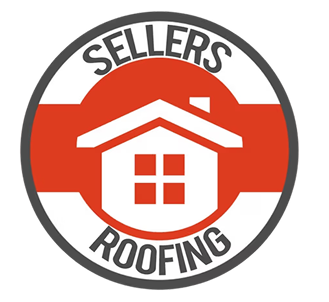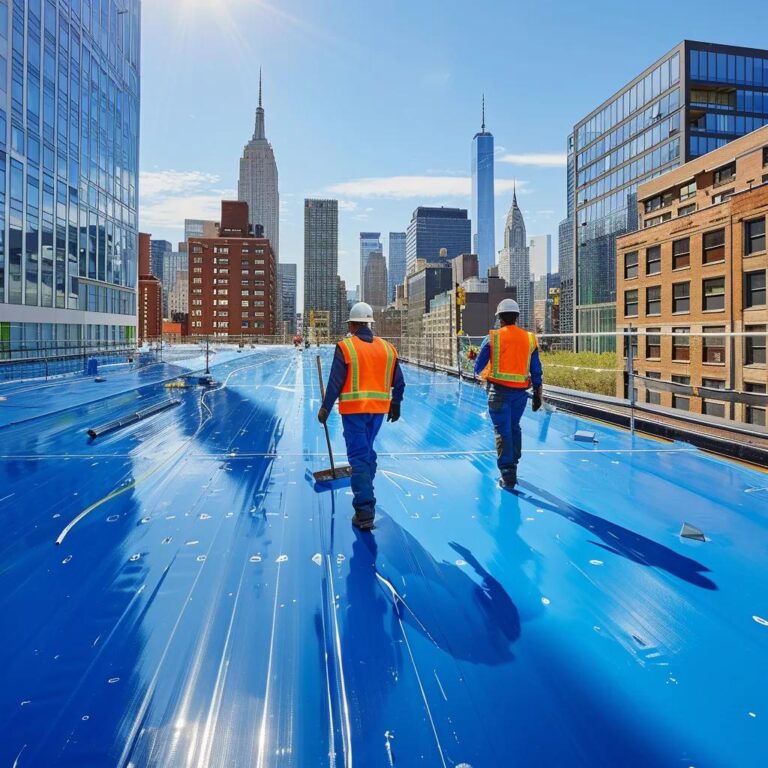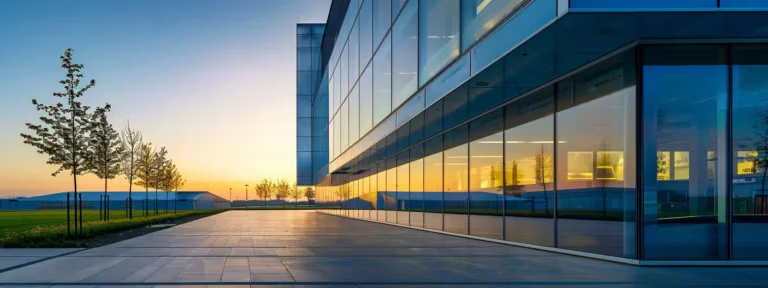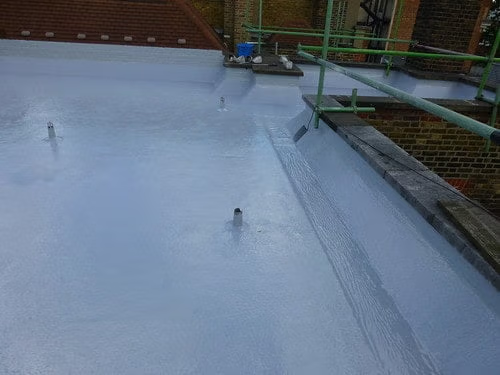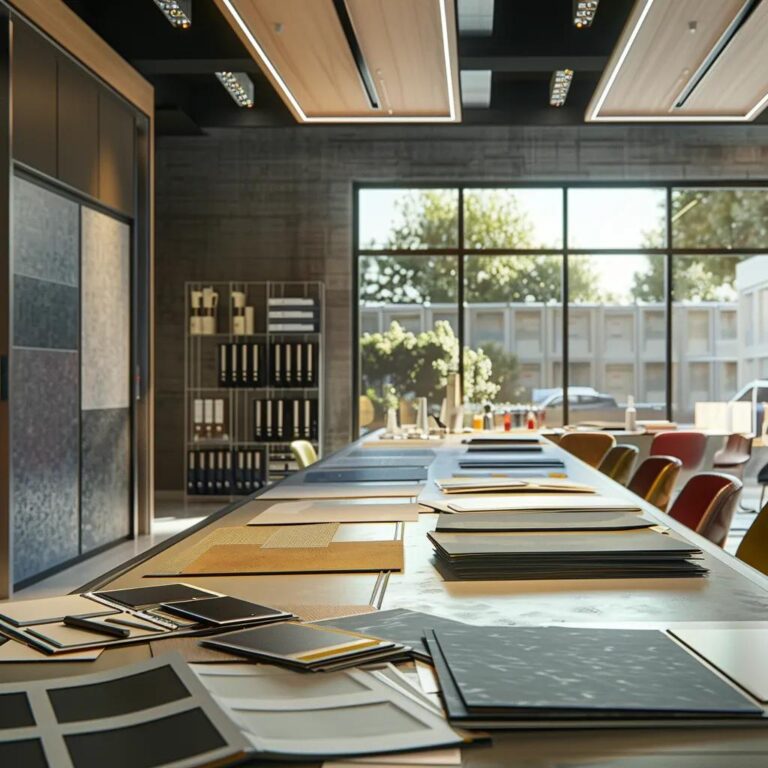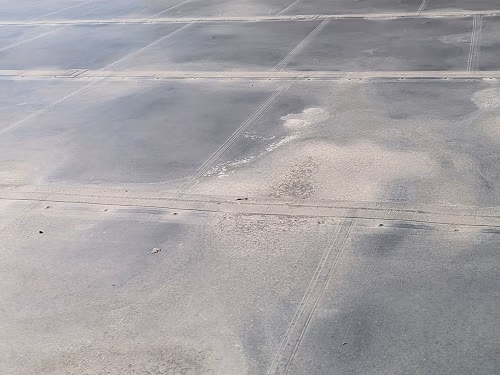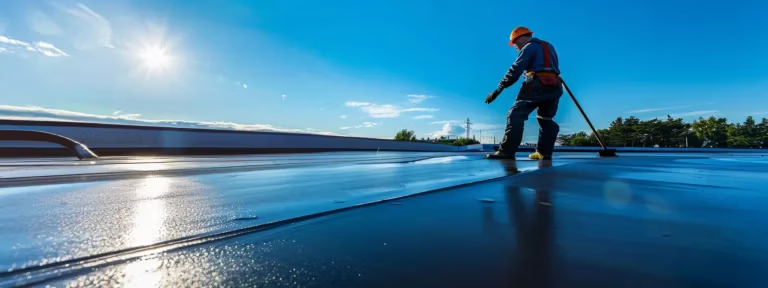Staying vigilant with commercial roofing repairs is critical to protecting your business’s assets from costly damages due to leaks, weather, and wear and tear over time. It’s about understanding the signs that signal the need for repair and recognizing the importance of quality materials and skilled workmanship to ensure your roof’s long-term performance.
On the other hand, regular assessments by professionals can help catch potential problems before they escalate, saving you significant time and resources. Keep reading to gain valuable insights into the essential steps for addressing roof repairs, preventive strategies to safeguard your structure, and how these measures can fortify the integrity of your commercial property against the elements.
Essential Commercial Roofing Repair Services
- Regular roof assessments are critical for identifying signs of damage early
- A swift response to roof damage can prevent more extensive and costly repairs
- Material selection for repairs should balance cost with durability and energy efficiency
- Regular inspections and maintenance extend the lifespan and performance of a commercial roof
- Tailored drainage systems are essential to prevent water damage and protect roof integrity
Identifying Common Roof Repair Needs for Businesses
As a seasoned professional in the roofing industry, I can attest that maintaining the integrity of your commercial roof is paramount. Regularly assessing your roof for signs of deterioration is the first step in avoiding costly repairs or replacements. It’s not uncommon to observe wear and tear over time; however, it’s critical to interpret these indicators accurately to enable swift action.
Water ingress, a primary adversary for any structure, should be addressed without delay as leaks can rapidly escalate, undermining the structural integrity of your property and potentially interrupting your business operations.
Spotting Signs of Wear and Tear on Your Commercial Roof
During my time in commercial roofing, I’ve learned that vigilance is key for property managers when preserving roof integrity. Sagging areas or ponding water can be easily spotted and are clear warnings that the roof structure may be compromised, necessitating immediate professional assessment.
Another telltale marker of rooftop degradation involves the roofing material itself. Blisters, cracks, and tears in the membrane or surface coating are red flags. These flaws can allow moisture to seep in, leading to more extensive damage if not promptly repaired:
- Blisters in the roofing membrane signal trapped moisture or air.
- Cracks and splits may point to weathering or UV radiation effects.
- Tears and punctures could be due to heavy foot traffic or mechanical damage.
Lastly, the integrity of roof fixtures such as flashings should not be overlooked. Corrosion or separation from surrounding materials can create entry points for water, so it’s imperative to include these elements in routine roof inspections.
Addressing Water Damage and Leakage Issues Promptly
When managing commercial properties, encountering water damage is often a matter of when not if. In my experience, promptness is non-negotiable; a swift response can mean the difference between a minor repair and a significant financial burden. Once a breach is detected, securing professional roofing services is essential to mitigate damages and restore the roof’s function and protection efficiently.
Years in the roofing business have taught me that water can be deceiving; what appears as a minor drip can signify extensive unseen damage. I advise clients to act immediately upon discovering any signs of moisture intrusions, as delayed reactions can lead to mold, structural issues, and impaired insulation, culminating in heightened energy consumption and costs.
In light of any leakage, a thorough inspection by a skilled roofer is crucial. My approach is to scrutinize not just the evident problem areas but also the adjacent materials and structures, as water can travel from the original entry point, creating additional hazards that might not be immediately apparent to the untrained eye.
Choosing the Right Materials for Your Commercial Roof Repair
Deciding on the appropriate materials for a commercial roof repair demands careful consideration, as the choices made today directly impact the future resilience and performance of your property. I assess the durability and longevity of various roofing materials with a critical eye, all while balancing immediate costs against potential long-term savings.
Moreover, I place a strong emphasis on energy efficiency during material selection, recognizing that an investment in high-performance materials can lead to substantial energy savings for the business over time. I ensure that the materials I recommend not only address the current issue but also align with the sustainability goals and financial planning of the business.
Evaluating Durability and Longevity of Roofing Materials
Choosing the right materials for roofing repairs begins with understanding the specific stresses your roof will face. Variables such as climate, the building’s architecture, and typical rooftop loads guide my recommendations. I prioritize materials that stand the test of time against these stresses, ensuring clients get the most durable solutions to withstand harsh weather or high traffic.
As a professional roofer, I gauge material longevity not just by its performance in ideal conditions but by how it ages under duress: extreme temperatures, heavy rain, and relentless sun exposure. Before suggesting a material, I consider its life expectancy, maintenance needs, and its track record in installations similar to my client’s property:
- Thermoplastic (TPO) and PVC membranes offer superb resistance to leaks and weathering.
- EPDM rubber roofing is known for its durability and ease of repair.
- Metal roofing, while an initial investment, provides decades of protection with minimal upkeep.
My assessments also factor in environmental impact and energy efficiency. In our era, materials that help reduce a building’s carbon footprint and enhance its insulation capability are not merely beneficial; they are a responsible choice. Recommending materials with high reflectivity or incorporated cool-roof technology can lead to long-term cost savings from lower energy use.
Considering Energy Efficiency in Material Selection
My selection process always includes a detailed analysis of energy-saving capabilities inherent in roofing materials. Reflective roof coatings, for example, can dramatically reduce heat absorption, leading to significantly decreased air conditioning costs for a building.
Adopting energy-efficient roofing materials is not merely an operational cost measure; it’s a strategic investment. By installing roofs with higher R-values and better insulation properties, businesses see a reduction in their overall energy expenditure, nurturing a more sustainable operational model.
I integrate the modern technology of cool roofing systems in my material selection, which goes beyond the immediate repair benefits. These advanced materials contribute to a building’s energy efficiency by reflecting more sunlight and absorbing less heat, further enhancing indoor comfort without overburdening HVAC systems.
The Role of Professional Inspections in Roof Maintenance
Engaging in regular roof inspections stands as one of the most effective strategies I recommend staving off major repairs on commercial properties. As a proactive measure, such check-ups can unearth minor issues before they evolve into significant problems.
Understanding the inspection process, including what to expect and prepare for, is a particular area of interest for many clients. When clients schedule these regular assessments, they trust my expertise to provide a comprehensive evaluation of their roofing systems, which in turn informs the maintenance or repair plan that follows. Each inspection is a critical opportunity to ensure the long-term health and functionality of their commercial roofing investment.
Scheduling Regular Inspections to Avoid Major Repairs
The necessity of scheduling regular commercial roof inspections cannot be overstated in the context of preventative maintenance. Proactive measures such as these not only mitigate the risk of unexpected repairs but also extend the life of the roofing system. Scheduling inspections semi-annually, or after major weather events, keeps roofing concerns from evolving into emergencies.
My approach focuses on identifying potential weak spots and addressing them before they fail. Consistent check-ups allow for a strategic timeline for repairs, maintenance, and budgeting, reducing the likelihood of extensive damage or interruption to business operations due to roofing failures.:
- Evaluation of wear and tear appropriate to the roof’s age and material.
- Identification of critical areas needing immediate attention.
- Recommendation of a repair schedule in line with the business’s operational calendar.
By aligning inspection schedules with my clients’ business cycles, I tailor roof maintenance to cause minimal disruption. This strategic planning is crucial for businesses that cannot afford the downtime associated with reactionary large-scale repairs or full roof replacements due to neglect.
Understanding the Inspection Process and What to Expect
Understanding the intricate details of a professional roofing inspection begins with recognizing the experience and knowledge your roofer brings to the table. As soon as I set foot on your property, my skills are directed towards uncovering any potential vulnerabilities in your roofing system. The process is comprehensive, utilizing the latest tools and techniques in the industry to ensure nothing is overlooked.
Expect me to meticulously survey every inch of your roof, from the obvious open spaces to the often-neglected nooks and crannies. This means checking for surface imperfections, ensuring proper drainage, and scrutinizing flashings and edges, which are all key to preempting future leaks and damage points.
After the initial inspection, I offer a transparent overview of the roof’s condition, coupled with candid communication about any immediate repairs that may be required. My goal is to equip you with the knowledge to make informed decisions about your roof’s maintenance, and to plot a course of action that aligns with your business’s needs and budget.
Essential Steps in a Professional Roof Repair Process
In my years safeguarding the longevity and performance of commercial roofs, the repair process has always begun with a meticulous initial assessment. Characterized by a thorough damage evaluation, this step is critical to understanding the full scope and specifics of the repairs at hand. My experience has taught me to never underestimate this stage; it’s the foundation upon which we build a resilient roof.
Straight after concluding my examination, I pour over the information, drafting a detailed repair plan. This blueprint includes not only the actions necessary but also provides a clear estimation of the timeframe required to complete the work. For business owners, knowing what to expect and how long it will disrupt operations is invaluable, setting the stage for the efficient return to business as usual.
Initial Assessment and Damage Evaluation
Commencing a roof repair begins with an on-site visit to thoroughly assess the extent of the damage. I employ a meticulous approach, scrutinizing every aspect of the roof, mindful of the subtle signs that could signify underlying issues. It’s about painting a picture that frames the state of your roof beyond the obvious signs of damage, setting the stage for targeted repairs.
During this evaluative phase, I merge observation with technology, using tools designed to detect moisture, structural deformities, and insulation weaknesses. Trust in my hands-on analysis to unearth every potential problem, because missing even the smallest detail can lead to costly repercussions down the line.
My final report on this initial examination will candidly outline the damage, providing a realistic and straightforward reflection of the roof’s condition. I prioritize clear communication with clients about my findings, ensuring they understand the gravity of the situation and the necessary steps forward for their commercial roofing repair needs.
Detailed Plan Creation and Timeframe Estimation
Creating a definitive plan drives the effectiveness of any commercial roofing repair project. To this end, I meticulously draft a detailed strategy that meticulously delineates every step we must undertake, considering the scope of repairs identified from the initial evaluation. My focus is on deploying timely and artful solutions that dovetail with the client’s operational requirements.
Estimating the timeframe for completion is another vital aspect I handle with precision. I utilize my extensive experience to forecast accurately how long the project will take, balancing the urgency of the repairs with the least possible disruption to your business activities. In setting realistic timelines, I allow for contingencies while aiming to exceed expectations with efficiency.
Upon finalizing the plan, I ensure that every party involved is on the same page to streamline the execution phase. Communication is pivotal; not only do I convey the planned actions, but I also provide a clear timeline, equipping clients with the information they need to brace for the repair process. My goal is to minimize surprises by forearming the client with a blueprint that aligns with our collective vision for a revitalized commercial roof.
Preventive Measures to Extend the Life of Your Commercial Roof
The longevity and structural soundness of a commercial roof hinge on preemptive care and the implementation of proper safeguards. A cornerstone of my service offering is helping clients establish rigorous cleaning and maintenance routines that preserve their roofing investment. These practices are designed not only to maintain the aesthetic appeal but to prevent the small imperfections from evolving into costly repairs.
Additionally, recognizing the critical role that water management plays, I advise and facilitate the installation of robust drainage systems tailored to each property’s unique architecture. Proper drainage systems are instrumental in averting water pooling, a common yet avoidable problem that can cause immense damage over time.
Implementing Regular Cleaning and Maintenance Routines
Maintaining a clean roof is fundamental to preventing premature wear and tear. Throughout my career, I have emphasized to clients that debris such as leaves, branches, and dirt, if left unchecked, could lead to blocked drainage systems and subsequent water damage.
Consistent roof maintenance routines are essential for diagnosing and addressing minor issues before they escalate. During these scheduled cleanings, I actively look for signs of damage, such as small punctures or seam gaps, and I immediately propose remedial actions:
- Inspection of the roof surface for cleanliness and integrity.
- Clearing of drains, gutters, and downspouts to ensure adequate water flow.
- Identification and repair of minor issues found during routine checks.
Furthermore, I instill in my clients the importance of a scheduled maintenance plan. This allows for a structured approach to roof care, keeping the roofing materials in optimal condition and thereby extending the overall lifespan of the roof.
Installing Adequate Drainage Systems to Prevent Water Pooling
One aspect I repeatedly stress to clients is the need for a tailored drainage system on every commercial roof. A custom-designed system facilitates the swift removal of rainwater, preventing the detrimental effects of pooling that can weigh heavily on the roof structure over time.
I carefully evaluate the roof’s layout and slope to design drainage solutions that incorporate strategic placement of drains, scuppers, and gutters. These components work harmoniously to ensure water is effectively channeled away from the roof, reducing the risk of leaks and structural decay.
My commitment to preventing water-related damage extends beyond installation; I rigorously test the entire drainage setup to confirm its efficacy. After thorough testing under various conditions, I can confidently assure my clients that their commercial roofs are safeguarded against the challenges posed by water accumulation.
Conclusion
Maintaining commercial roofing through vigilant inspections and timely repairs is vital for the prevention of expansive property damage and business disruption. Selecting durable, energy-efficient materials and implementing robust roof maintenance routines safeguard the longevity and performance of your commercial property.
Custom-designed drainage systems play a crucial role in protecting the structure from water damage and should be integrated with care and precision. Ultimately, regular, professional roofing evaluations and repairs are essential investments that ensure the structural integrity and operational resilience of your business.
